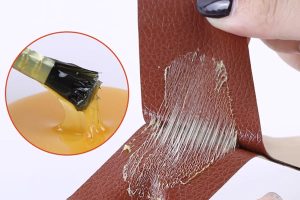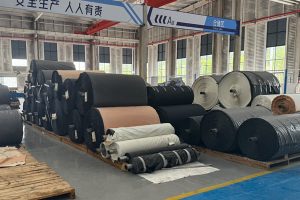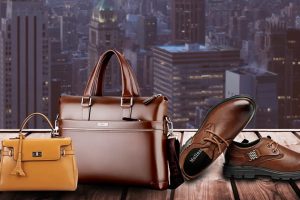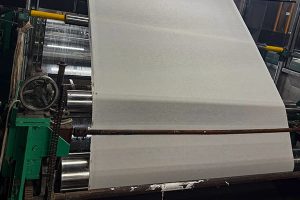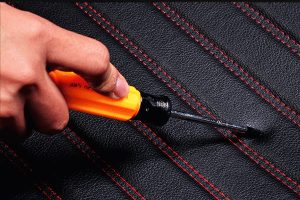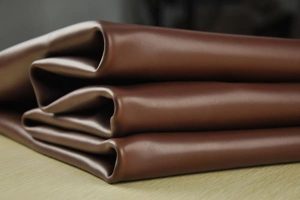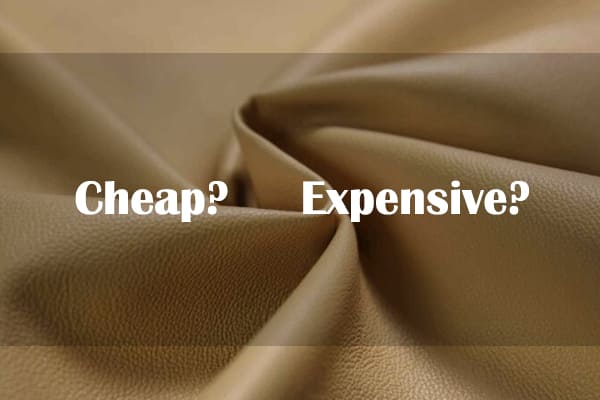
So, you’re thinking about buying leather fabric, huh? Maybe you’re dreaming of a chic leather jacket that screams “I mean business,” or perhaps you’re eyeing a new leather couch to replace that saggy, old recliner. But before you dive into the world of luxurious hides and synthetics, there’s one burning question: How much is this going to cost me? Well, friend, buckle up—leather pricing can feel like navigating through a jungle of full-grain, top-grain, and “is this even real leather?” options. From premium full-grain leather that’ll make your wallet weep (but your project sing) to affordable faux leather that looks good enough to fool your friends, the world of leather pricing is full of surprises. Ready to break it down and find out what makes leather worth every penny—or sometimes, just a few dimes? Let’s dive in!
Breaking Down the Cost: What Influences Leather Fabric Prices?
The price of leather fabric can vary significantly, and several factors influence these fluctuations. One of the primary drivers is the type of leather. Full-grain leather, which retains the natural surface of the hide, is often more expensive due to its superior quality and durability. On the other hand, corrected-grain or split leather, which undergoes more processing, tends to be more affordable. The origin of the hide also plays a role—leather from cows is generally more affordable than exotic hides like crocodile or ostrich. Additionally, the tanning process (vegetable tanning vs. chrome tanning) and the leather’s thickness, finish, and treatment can all affect the final price. Lastly, supply chain factors such as transportation costs, tariffs, and the leather’s rarity can further influence pricing.
Leather on a Budget: Affordable Options for Every Project
If you’re working on a project but need to stick to a budget, there are plenty of affordable leather options available. Faux leather, such as PU (polyurethane) or microfiber leather, is an excellent alternative for those looking for a leather-like appearance without the high price tag. These materials are often more affordable, easier to maintain, and animal-friendly. Bonded leather, made from scraps of real leather fused with synthetic materials, is another cost-effective choice, providing some of the look and feel of genuine leather at a fraction of the cost. For smaller projects, leather remnants or offcuts from upholstery shops can be a great bargain as well. Whether you’re crafting accessories, clothing, or upholstery, these budget-friendly options offer versatility without breaking the bank.
Luxury or Bargain? Understanding the Price Range of Leather Fabric
Leather fabric can range from inexpensive to luxury-priced, depending on the quality and origin of the material. At the higher end of the spectrum, full-grain and exotic leathers are considered luxury items due to their craftsmanship, rarity, and durability. These premium leathers can cost upwards of $50 to $100 per square foot, making them a significant investment for high-end fashion and interior design projects. On the other hand, top-grain leather, which is slightly more processed, can offer a balance between quality and affordability, usually costing around $20 to $30 per square foot. For bargain hunters, synthetic leathers or split leather can be as low as $10 per square foot, offering the look of leather at a more accessible price. Understanding these price ranges can help you make the right choice, whether you’re looking for an everyday material or a luxury finish for your project.
From Genuine to Synthetic: Comparing Leather Fabric Costs
When it comes to leather fabric, the price spectrum is largely influenced by whether the material is genuine or synthetic. Genuine leather, crafted from animal hides, typically commands a higher price due to its durability, natural texture, and longevity. Full-grain leather, known for its premium quality, can cost upwards of $50 per square foot, while top-grain leather, which has been slightly processed, is more affordable, ranging from $20 to $30. In contrast, synthetic alternatives like PU (polyurethane) and faux leather are significantly cheaper, with prices often as low as $10 per square foot. These synthetic options mimic the look and feel of genuine leather but come at a fraction of the cost, making them a popular choice for budget-conscious buyers or those seeking animal-friendly materials. Ultimately, the choice between genuine and synthetic comes down to a trade-off between cost, quality, and personal preference.
Is It Worth the Investment? A Guide to Leather Fabric Pricing
Leather fabric, especially genuine leather, can feel like a considerable investment, but it often pays off in the long run. Genuine leather is prized for its durability, resistance to wear and tear, and ability to develop a beautiful patina over time. Full-grain leather, although expensive, can last for decades if properly cared for, making it a smart investment for high-use items like furniture, jackets, or handbags. Top-grain leather offers a slightly less durable option but still boasts a long lifespan, making it a solid middle-ground choice for those who want quality without the highest price tag. On the other hand, synthetic leather, while less expensive upfront, doesn’t last as long and may need to be replaced sooner. Ultimately, whether leather fabric is worth the investment depends on the project and how important longevity and authenticity are to you.
Factors That Shape Leather Fabric Pricing: From Tanning to Texture
Several key factors influence the price of leather fabric, starting with the tanning process itself. Leather tanned using vegetable-based methods tends to be more expensive because it’s a slower, eco-friendly process that results in high-quality, durable leather. Chrome tanning, a faster and more common chemical process, typically produces more affordable leather. The texture and finish of the leather also play a significant role—full-grain leather, which retains the natural texture of the hide, is usually pricier than smooth or corrected-grain leather, which undergoes additional processing. The thickness of the leather, its origin, and the rarity of the animal hide (with exotic leathers like crocodile or ostrich fetching premium prices) further affect the cost. All of these elements combined—from the tanning process to the texture—create the wide range of pricing seen in leather fabric.
Conclusion
In the world of leather fabric, whether you’re after luxury or a bargain, there’s a price point for everyone. From the lavish feel of full-grain leather that could last a lifetime to budget-friendly faux options that still look sleek, leather proves itself to be a timeless material—if not for your wallet, then certainly for your next project. Just remember, whether you’re splurging on that crocodile hide or grabbing a deal on PU leather, every yard has its price, and every price has its purpose. So, go forth and conquer the leather jungle with confidence—and maybe with a little extra room in your budget for that matching wallet you didn’t know you needed. Happy shopping!


